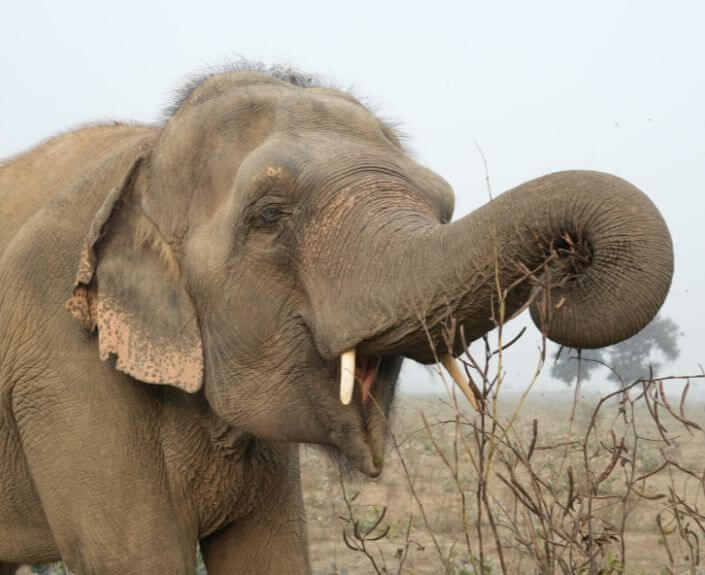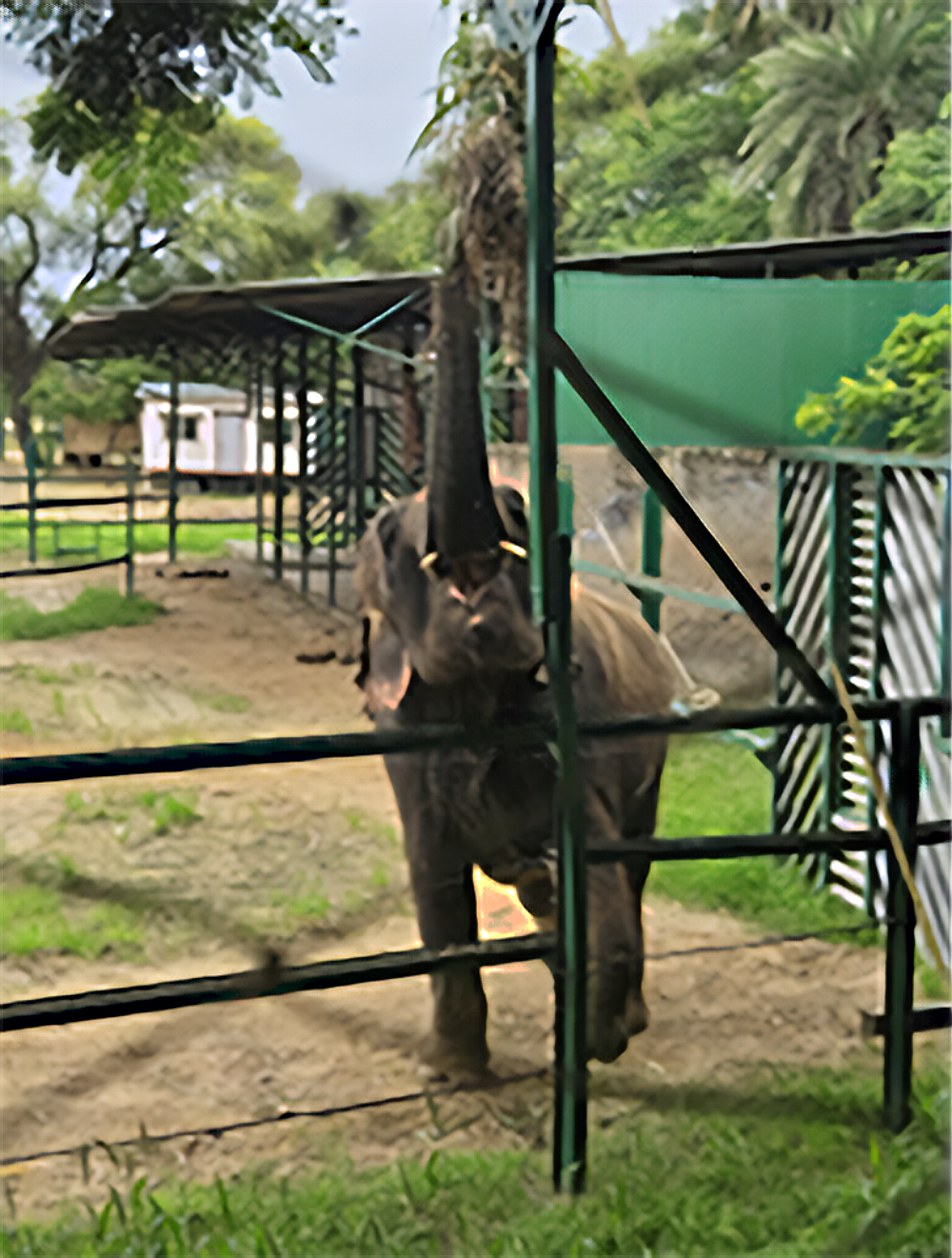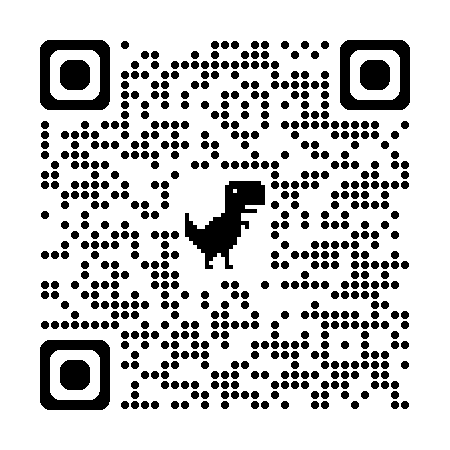My Experience at an Elephant Sanctuary
 I had never seen an elephant before. I had seen movies and read accounts of their intelligence and emotional depth, but nothing could have prepared me for what was to come. What initially caught my attention was how peaceful and relaxed they were, a really amazing thing given that most of them had such traumatic backgrounds.
I had never seen an elephant before. I had seen movies and read accounts of their intelligence and emotional depth, but nothing could have prepared me for what was to come. What initially caught my attention was how peaceful and relaxed they were, a really amazing thing given that most of them had such traumatic backgrounds.
Before I tell you about my experience, it would be good to share a little history about Wildlife SOS, the Indian non-profit organization that operates the sanctuary. Kartick Satyanarayan and Geeta Seshamani founded it in 1995, and their mission is to rescue and rehabilitate wildlife and promote biodiversity. Their first task was to end the cruel activity of “dancing bears,” which they succeeded in doing in 2009. Since then, their key task has been rescuing elephants from temples and circuses and providing them comfort for the rest of their life. In addition to 12 centers all over India, Wildlife SOS also rescues sloth bears, leopards, tigers, and Himalayan brown bears. They also set up the first-ever elephant hospital in India for more comprehensive medical treatment.
My main reason for going to the elephant sanctuary was that I wished to learn about elephants. I had heard how smart and feeling they were, and I wished to see it for myself. I also wished to make a difference in the world because I’ve always been an animal rights activist at heart. I was keeping my fingers crossed that perhaps I could be of some help to Wildlife SOS, even if it was in a limited way, and be of assistance by being there.

I saw firsthand the kind of trauma that these animals had endured. There was Emma, for example, who, for 40 years, was forced to walk on blistering hot pavement as a begging elephant and now has permanent damage to the pads of her feet. Or Laxmi, one of the temple elephants, who had been junk-fed for 18 years and was malnourished but 1,800 kg overweight. Despite their horrific pasts, the careful, gentle care that Wildlife SOS provides ensures that all the elephants are relaxed and happy. I could see how much the keepers adored their elephants and how they made sure that they had the best life.
Every morning began with a little routine work. I’d start by chopping up fresh fruit and measuring and placing out fodder (elephant food) for the enrichment toys of the elephants. Enrichment toys are barrels and other things with challenging puzzles, like spinning or pulling the barrels to reveal the food. But even in that routine, there was a lesson to be learned every minute. What might otherwise be a mundane task, like observing Emma’s feet and timing the length of time each one was held aloft, proved to be very important.

These small things taught me the bigger picture of their care. I learned how the elephants communicated while out for walks in more of a natural environment and got to see firsthand how much individualized daily medical care each of them needs. Some of the elephants had their feet treated, some received medication, but all of them needed some kind of medical procedure. I observed their cleverness while they effortlessly solved their enrichment tasks, and even heard that they learned how to use sticks to turn the electric fence off.
One elephant I developed a very close relationship with was Emma. When I was working with her for observation purposes, I felt a strong bond with her and understood her hurt. I have already mentioned Emma, but only because she was the most important animal I encountered. Her story made me see that while now the elephants are safe, they will never be free from the pain they’ve endured. Emma is forever in pain from walking endlessly on scorching highways. Because of her past, she is always switching weight from one of her lead legs to another, a physical reminder of the insensitivity of someone.
I have always appreciated staff in sanctuaries, but observing them every day helped me build appreciation for their dedication. It takes an immense amount of dedication and attention to detail to care for elephants, and I was amazed. Working with Wildlife SOS was inspiring and enriching, and I am grateful to have been able to do it.
Living life with them was more of a privilege than an assignment. This experience taught me a number of things, both about myself and the world. I learned that I possess an ability to concentrate and empathize with others that I hadn’t previously appreciated. The sight of Emma’s physical reminders of previous trauma hurt me, but it also motivated me. It made me consider that while I may not be able to undo her pain, I could be a participant in keeping her relaxed and comfortable now. This encounter has spurred me on to more investigation into animal welfare policy and advocating stronger safeguards for wildlife.
I want to tell others: nature is not for us to exploit and take from. The elephants at the sanctuary were not in the wild; they had fallen victim to man’s greed and neglect. Their tales serve as a heart-wrenching reminder of the ill that animal exploitation does. But witnessing the commitment of the staff at Wildlife SOS gave me the finest of human nature. These people were dedicated to rescuing and rehabilitating these animals, working day and night. Their work proves that humans can exhibit unimaginable kindness and can have a deep, empathetic connection with nature. If you’re persuaded by my experience, I encourage you to donate to elephant sanctuaries in material form. You can contribute to Wildlife SOS by donating, spreading awareness of their mission, or seeking volunteer opportunities to assist in furthering their cause. To learn more or to get involved, check out their website: wildlifesos.org.
 In 1995, a group of individuals determined to conserve India’s rich natural heritage began operating a rescue center out of a small garage in New Delhi. Their goal was simple – to aid wildlife in distress and expand India’s core value of the right to freedom and dignity to the realm of animals. Kartick Satyanarayan and Geeta Seshamani’s grit and determination gave birth to Wildlife SOS. Today, they have evolved into an organization actively protecting India’s precious wildlife, conserving habitats, studying biodiversity, conducting research, and creating alternative and sustainable livelihoods for poacher communities. They are the largest wildlife rescue organization in India and run 12 wildlife rescue centers all over the country.
In 1995, a group of individuals determined to conserve India’s rich natural heritage began operating a rescue center out of a small garage in New Delhi. Their goal was simple – to aid wildlife in distress and expand India’s core value of the right to freedom and dignity to the realm of animals. Kartick Satyanarayan and Geeta Seshamani’s grit and determination gave birth to Wildlife SOS. Today, they have evolved into an organization actively protecting India’s precious wildlife, conserving habitats, studying biodiversity, conducting research, and creating alternative and sustainable livelihoods for poacher communities. They are the largest wildlife rescue organization in India and run 12 wildlife rescue centers all over the country.

